By the NCFishes.com Team
The waters along and off the coast are where you will find 18 of the 19 species within the Family Sciaenidae (Table 1) known from North Carolina. Until recently, the 19th species and the only truly freshwater species in this family, Freshwater Drum, was found approximately 420 miles WNW from Cape Hatteras in the French Broad River near Hot Springs.
Table 1. Species of drums and croakers found in or along the coast of North Carolina.| Scientific Name/ American Fisheries Society Accepted Common Name | Scientific Name/ American Fisheries Society Accepted Common Name |
|---|---|
| Aplodinotus grunniens – Freshwater Drum | Menticirrhus saxatilis – Northern Kingfish |
| Bairdiella chrysoura – Silver Perch | Micropogonias undulatus – Atlantic Croaker |
| Cynoscion nebulosus – Spotted Seatrout | Pareques acuminatus – High-hat |
| Cynoscion nothus – Silver Seatrout | Pareques iwamotoi – Blackbar Drum |
| Cynoscion regalis – Weakfish | Pareques umbrosus – Cubbyu |
| Equetus lanceolatus – Jackknife-fish | Pogonias cromis – Black Drum |
| Larimus fasciatus – Banded Drum | Sciaenops ocellatus – Red Drum |
| Leiostomus xanthurus – Spot | Stellifer lanceolatus – Star Drum |
| Menticirrhus americanus – Southern Kingfish | Umbrina coroides – Sand Drum |
| Menticirrhus littoralis – Gulf Kingfish |
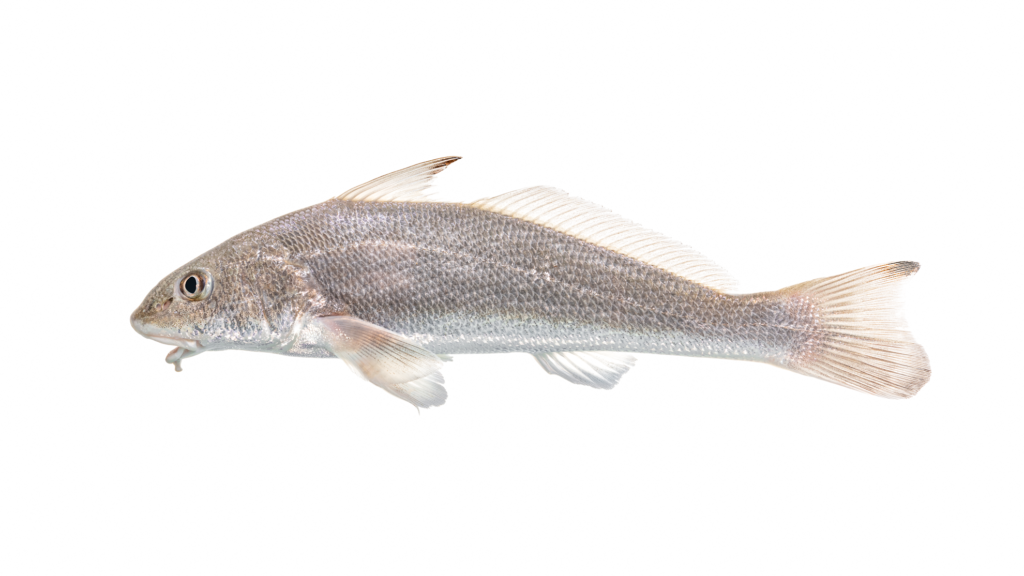
With so many species historically so well-known to recreational and commercial fishermen, to lay people, and their availability in seafood markets, it is not surprising that these 19 species are known by many local and vernacular names. Skimming through the ETYFish Project (http://www.etyfish.org/), Kells and Carpenter (2011), Manooch (1984), and Smith (1907), these species traditionally answered or still answer when their names are called:
- Aplodinotus grunniens (Freshwater Drum – Gasper-gou (pronounced gaspə(r)¦gü), Sheepshead
- Bairdiella chrysoura (Silver Perch) – Perch (White, Sand, and Yellow-finned), Yellow-tail, and Silver Croaker
- Cynoscion spp. (Spotted Seatrout, Silver Seatrout, and Weakfish) – Trout (Bastard, Speckled, Sea, Salmon, Black, Gray, Summer, Yellow-fined, Sun, and Shad), Gray Seatrout, Salmon, Weakfish (Spotted, Silver, and Gray), Squeteague (pronounced skwi-ˈtēg, Southern, Spotted, and Silver), and Kingfish
- Equetus lanceolatus (Jackknife-fish) – Ribbon-fish
- Larimus fasciatus (Banded Drum) – Bullhead, Chub
- Leiostomus xanthurus (Spot) – Jimmy, Chub, Roach, Goddy, Lafayette, Norfolk Spot
- Menticirrhus spp. (Southern Kingfish, Gulf Kingfish, and Northern Kingfish) – Sea Mullet, Round-head, Sea Mink, Kingfish, Virginia Mullet, Whiting (Carolina, Gulf, Silver, and Surf), Barb, Hake, Rock-Fish, and Southern Kingcroaker
- Micropogon undulatus (Atlantic Croaker) – Croaker, Crocus, Hard-head
- Pareques iwamotoi (Blackbar Drum) – Gulf Cubbyu
- Pogonias cromis (Black Drum) – Sea Drum, Drum
- Sciaenops oscellatus (Red Drum) – Drum, Puppy Drum, Channel Bass, Spotted Bass, Redfish, Branded Drum, Spottail Bass
- Stellifer lanceolatus (Star Drum) – American Star Drum
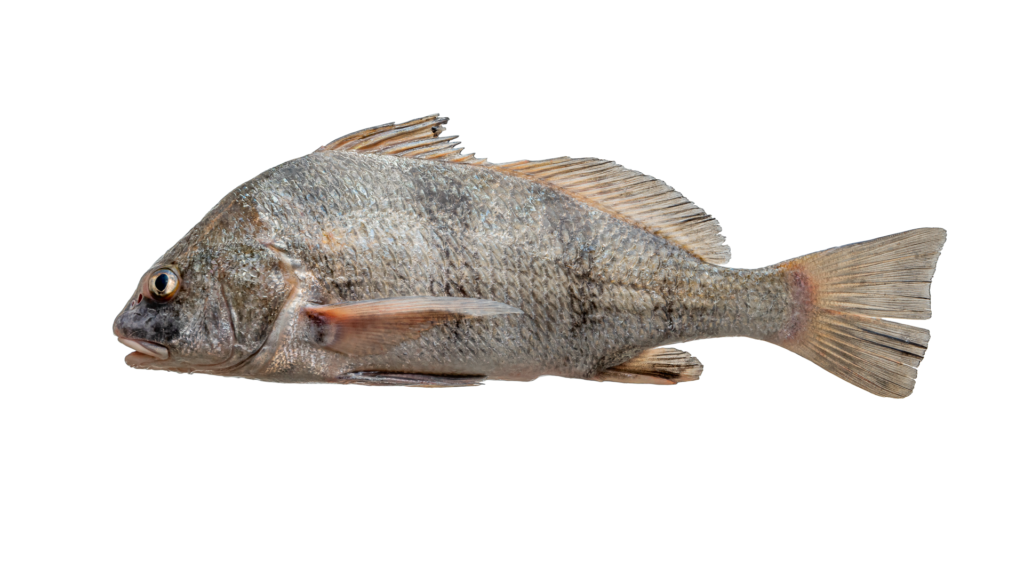
Even Smith (1907) pined that: “The common names of this species [referring to Cynoscion regalis, Weakfish] are numerous, and some of them are very improper” and “The local names applied to this species [referring to Cynoscion nebulosus, Spotted Seatrout] are indefensible, but will probably never be supplanted by appropriate ones”. However to bring some semblance of order and stability to this cornucopia of regional jargon, the American Fisheries Society-accepted common names are perhaps less colorful, but more socially acceptable and scientifically standardized (Page et al. 2013) and each of their scientific (Latin) name actually means something (please refer to The Meanings of the Scientific Names of Croakers and Drums, pages 22 and 23).
In 1585-1593, John White illustrated Atlantic Croaker labeled with the Algonquin word used by the Croatoan First Peoples, Manchauemec (https://www.coastalcarolinaindians.com/updated-algonquian-word-list-by-scott-dawson/), and noted: “Some a foote in lengthe” (Figure 1). He also illustrated Red Drum labeled with the Algonquin word, Chingwusso, and noted: “Some 5 foote in length” (Figure 2). Coincidentally, this measurement is almost identical to that (5.2 feet) reported 425 years later by Kells and Carpenter (2011).
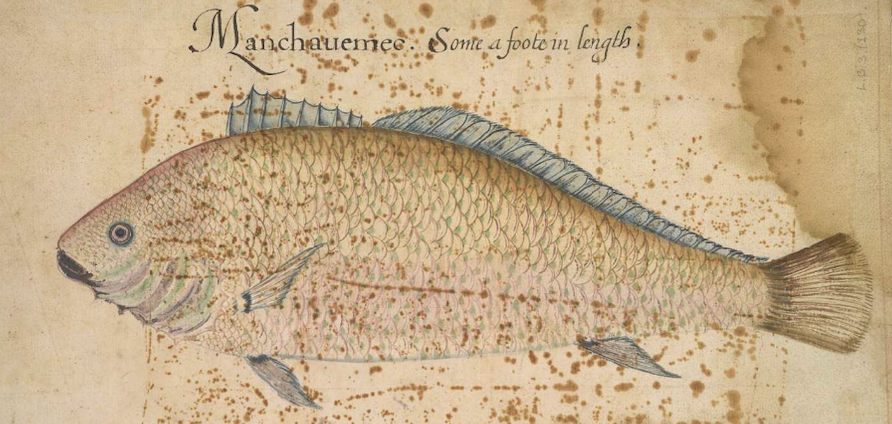
Figure 1. Painting of Atlantic Croaker by John White, 1585-1593. Painting courtesy of the British Museum, Museum No. SL,5270.113 (https://www.britishmuseum.org/collection/object/P_SL-5270-113).
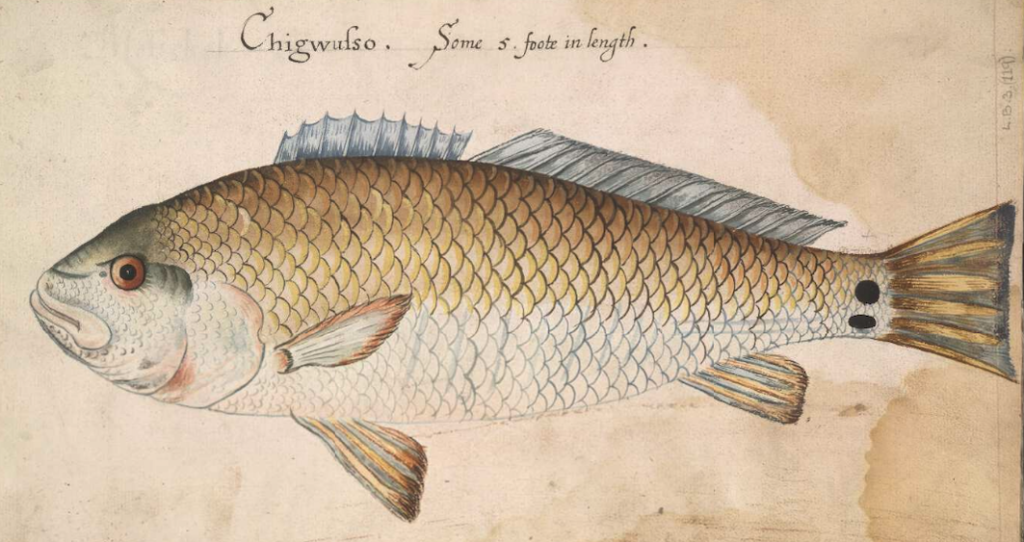
Figure 2. Painting of Red Drum by John White, 1585-1593. Painting courtesy of the British Museum, Museum No. SL,5270.102 (https://www.britishmuseum.org/collection/object/P_SL-5270-102).
More than a century after John White painted these two fish, both species were mentioned as occurring in North Carolina’s waters by John Lawson in 1709 who described the Red Drum as: “. . . a large Fish much bigger than the Bluefish. The Body of this is good firm Meat, but the Head is beyond all the Fish I ever met withal an excellent Dish. We have greater Numbers of these Fish, than of any other sort. People go down and catch as many Barrels full as they please, with Hook and Line, especially every young Flood, when they bite. These are salted up, and transported to other Colonies, that are bare of Provisions.” (Lawson (1709), p.156). Although White did not illustrate Black Drum, Lawson (1709, p. 156) reported: “. . . are a thicker-made Fish than the Red Drum, being shap’d like a fat Pig; they are a very good Fish, but not so common with us as to the Northward.” With regards to Atlantic Croaker, Lawson (1709, p158) remarked: “The Crocus is a Fish, in Shape like a Pearch, and in Taste like a Whiting. . . . They are very good”. If you are interested in more recent tried and true Down East ways to prepare and eat some of North Carolina’s drums and croakers please consult Manooch (1984).
Smith (1907) reported that the fishes of this family (Figure 3) in North Carolina were in aggregate more valuable than all the other saltwater fishes combined. That is an amazing statistic. He also stated that the annual catch exceeded 7 million pounds worth over $225,00, which would be the equivalent of $6.7 million dollars in 2021. Atlantic Croaker and Squeteague (Cynoscion spp.) along with mullets (Mugil spp.) were the three most important saltwater species during the turn of the last century (Smith 1907).
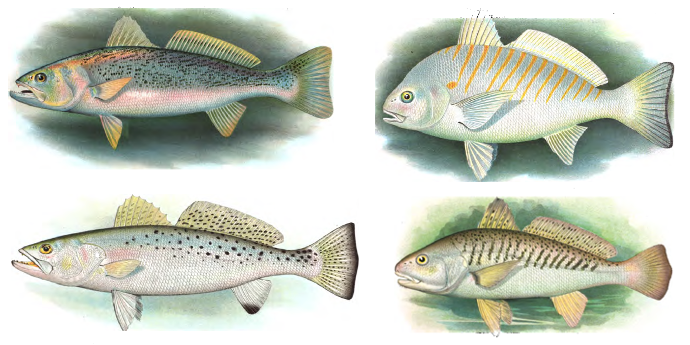
Figure 3. Illustrations by Albertus H. Baldwin in Smith (1907). Clockwise from top left – Weakfish, Spot, Croaker, and Spotted Seatrout.
Except for Freshwater Drum, all the other species of drums and croakers are to be found along North Carolina’s coast (Maps 1 – 16) (NCFIshes.com; Tracy et al. 2020; [Please note: Tracy et al. (2020) may be downloaded for free at: https://trace.tennessee.edu/sfcproceedings/vol1/iss60/1.] Silver Perch, Atlantic Croaker, and Red Drum occasionally stray into fresh waters (Maps 2, 12, and 16; Tracy et al. 2020), but spend most of their lives in estuarine or marine waters. Spot (Map 8) is also primarily an estuarine species that may be found seasonally in freshwater habitats (Tracy et al. 2020).
Some of the species’ mapped distributions may be an artifact of their rarity as vouchered specimens at North Carolina Museum of Natural Sciences (i.e., researchers being hesitant to preserve large-bodied specimens or recreationally important game species) and/or their rarity in North Carolina waters. Distributional maps, based upon vouchered specimens at the North Carolina Museum of Natural Sciences, are unavailable for Sand Drum, and Blackbar Drum.
Freshwater Drum is indigenous to the western Mountain river basins (Map 1) but currently only found in the French Broad basin. [Note: see Supplemental Maps 1-3, page 24, showing North Carolina’s 100 counties, 21 river basins, and 4 physiographic regions.] It was illegally introduced into the Roanoke basin, into John H. Kerr Reservoir, possibly as recently as the 1980s or 1990s. Anecdotal reports now document its occurrence in Lake Gaston and Roanoke Rapids Lake and within the Roanoke Rapids Dam bypass reach. More occurrences in the mainstem of the Roanoke River downstream from Roanoke Rapids Dam are to be expected into the future (Tracy et al. 2020). It has also been recently collected upstream from Kerr Reservoir in the Dan River at Milton in Caswell County (Kelsey Roberts, North Carolina Wildlife Resources Commission, pers. comm.).
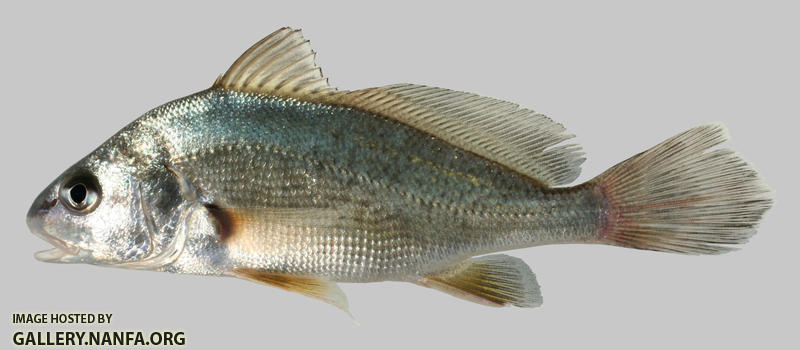
Croakers and drums vary greatly in size from the petite Star Drum at about 200 mm (8 inches) to almost a whopping 1700 mm (5.6 feet) for Black Drum. Their occupied habitats are also variable, depending upon the species from nearshore, shallow beaches and the surf zones, to seagrass beds in estuaries, to off shore deep reefs and hard bottoms, to inlets and near river mouths. They may be found over shallow hard or soft sandy and muddy bottoms or in tide pools (Kells and Carpenter 2011). Most species inhabit shallow waters, but Jackknife-fish and Spot can be found to depths of 200 feet, Banded Drum to 320 feet, and Blackbar Drum and Cubbyu to about 600 feet (Kells and Carpenter 2011). As mentioned previously, Freshwater Drum, as its name implies is found exclusively in fresh water. In the French Broad River basin it is found in the mainstem of the French Broad River where there are some backwaters and slower currents. It is also an introduced inhabitant of some of the major reservoirs along the Roanoke River and in the future, downstream (Tracy et al. 2020).
Freshwater Drum is the species in the family that is state-listed; it is a Special Concern species. None of the species is a federally-listed species (NCAC 2017; NCNHP 2020; NCWRC 2017). The recreational and commercial harvesting (take) of Red Drum, Weakfish, Spotted Seatrout, and Black Drum are state regulated by the North Carolina Division of Marine Fisheries and the North Carolina Wildlife Resources Commission (NCDMF 2020; NCWRC 2020).
The identification of drums and croakers is relatively straight-forward. Key characteristics for their proper identification include the presence (and number) or absence of chin barbels, breast and dorsal fin scalation pattern, length of spinous dorsal fin, body coloration and striping, size of mouth, and the presence or absence of canine teeth (please refer to the Identification Key to the Freshwater and Marine Drums and Croakers (Family Sciaenidae) in North Carolina).
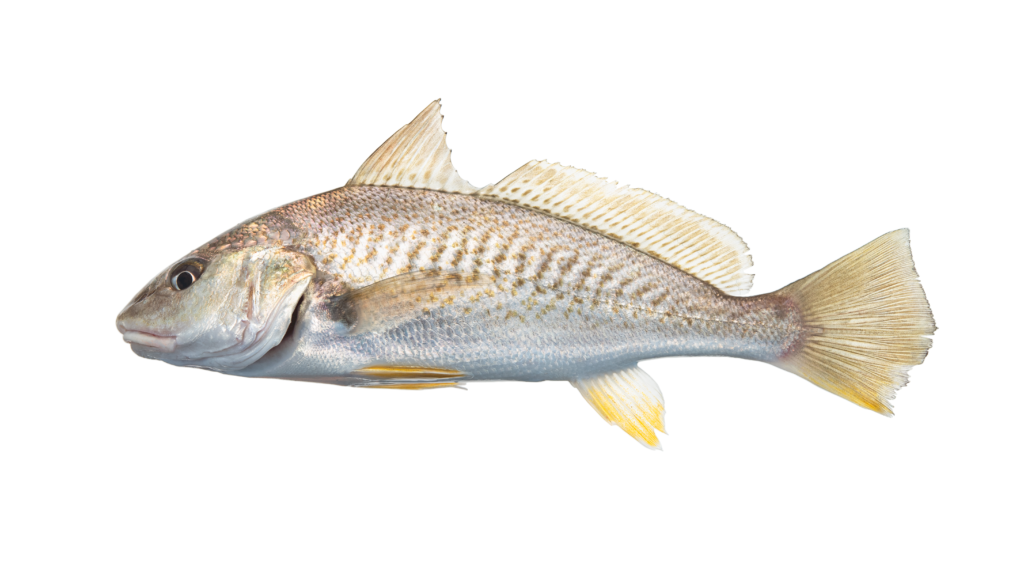
If you have troubles with your identifications, just send us (https://ncfishes.com/contact/) an e-mail and include as many quality digital photographs as you can along with all the pertinent locality descriptors so that we will know from where the fish came.